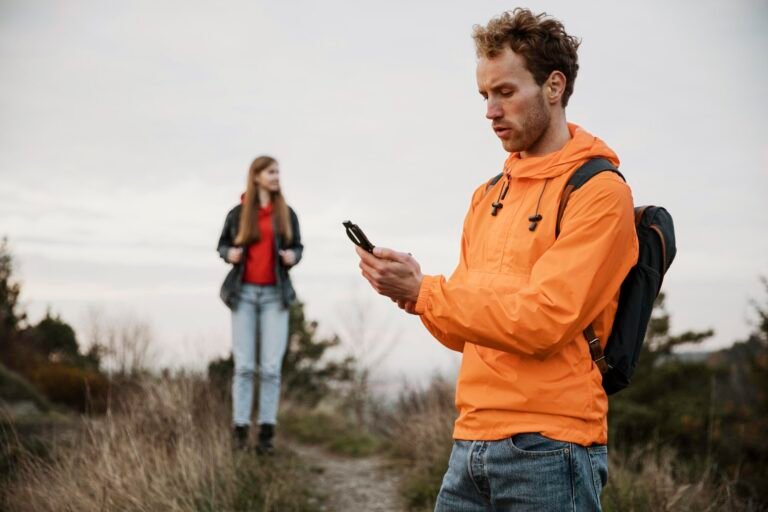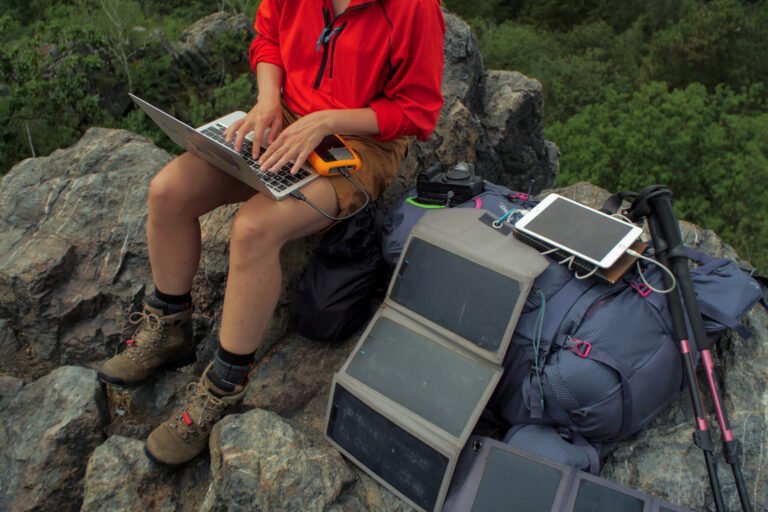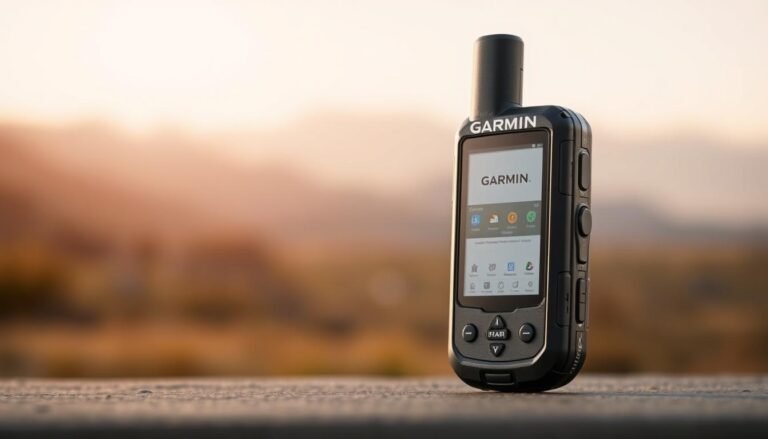App vs. Map: Why 78% of Professional Guides Are Embracing Hybrid Navigation Systems in 2025
Discover why 78% of professional guides are embracing hybrid navigation systems in 2025. Learn how these cutting-edge solutions combine apps and maps for optimal guidance.
The landscape of gps navigation technology is undergoing a significant transformation. As professional guides increasingly rely on advanced tools to enhance their services, a notable shift towards hybrid navigation systems has been observed.
According to recent trends, approximately 72% of knowledge workers, including professional guides, report using at least one AI tool not provided by their employer on a weekly basis (McKinsey Global Institute, 2024). This statistic underscores the growing demand for innovative navigation software that can seamlessly integrate various technologies.
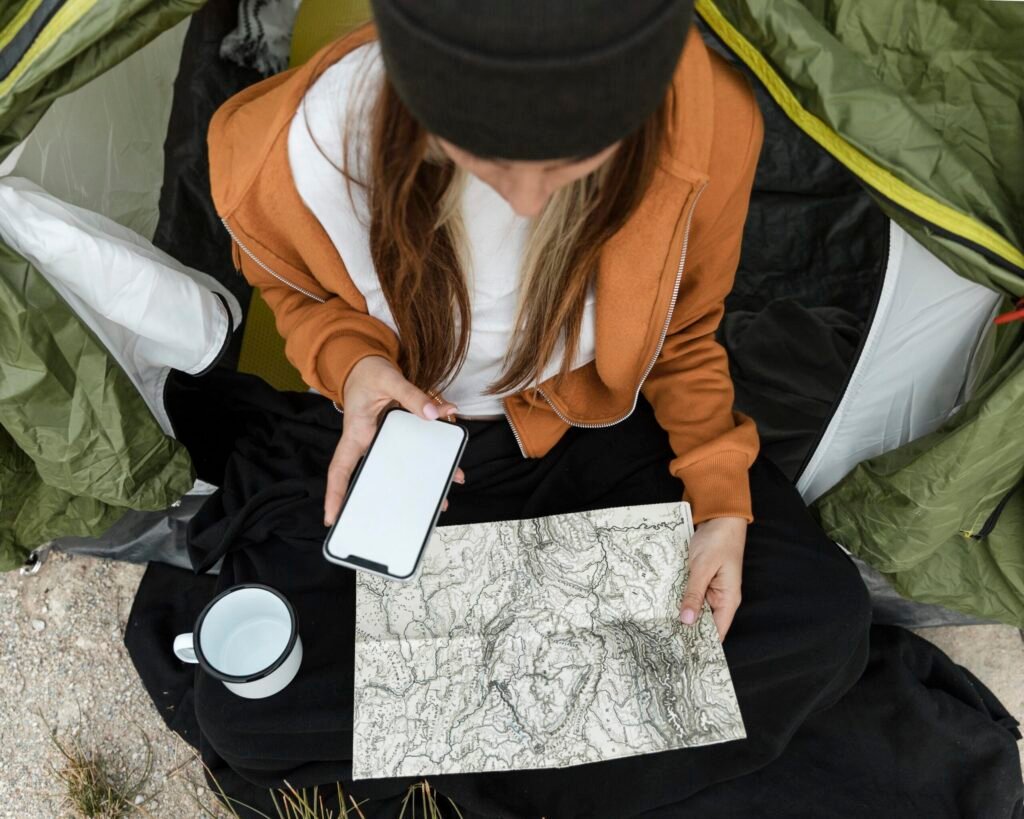
The adoption of hybrid solutions is driven by their ability to offer more accurate and reliable navigation. By combining the strengths of different navigation methods, these systems provide a more comprehensive and user-friendly experience.
The Evolution of Navigation in Professional Guiding
The evolution of navigation in professional guiding reflects broader technological trends and the industry’s adaptability. Historically, guides have relied on various methods to navigate, from traditional paper maps to more sophisticated technologies.
From Paper Maps to GPS: Historical Navigation Methods
Professional guides have long used maps and compasses as primary navigation tools. The introduction of GPS technology marked a significant shift, offering more accurate and efficient navigation. GPS navigation technology has become indispensable, allowing guides to pinpoint locations with precision.
The transition from traditional methods to GPS was gradual. Initially, GPS devices were bulky and expensive, but advancements made them more accessible and user-friendly. Today, guides can choose from a variety of GPS-enabled devices, including handheld units and smartphone apps.
| Navigation Method | Key Features | Adoption Period |
|---|---|---|
| Paper Maps | Physical maps, compass | Pre-1990s |
| GPS Devices | Satellite-based, precise location | 1990s-2000s |
| Smartphone Apps | Integrated GPS, real-time updates | 2010s-present |
The Digital Transformation of Guide Navigation
The digital transformation has further enhanced guide navigation. Modern guides use a combination of digital tools, including in-car navigation systems and specialized GPS devices. The integration of hybrid vehicle navigation systems has also become more prevalent, offering guides versatile navigation options.
As technology continues to evolve, professional guides are adopting hybrid navigation systems that combine the best of traditional and digital methods. This shift is reflected in the industry’s growing reliance on sophisticated navigation tools, enhancing the guiding experience.
What Are Hybrid Navigation Systems and How Do They Work
In 2025, the use of hybrid navigation systems is transforming the professional guiding industry. These systems combine various navigation technologies to provide more accurate and reliable navigation.
Defining Modern Hybrid Navigation Technology
Hybrid navigation systems integrate different technologies such as GPS, maps, and sensors to offer comprehensive navigation solutions. This integration enhances the accuracy and reliability of navigation, making it indispensable for professional guides.
Core Components and Integration Methods
The core components of hybrid navigation systems include both software and hardware elements. Understanding these components is crucial for appreciating how these systems work.
Software Elements of Hybrid Navigation
The software elements include navigation algorithms, map data, and user interface designs. These elements work together to provide seamless navigation experiences.
Hardware Components and Backup Systems
Hardware components comprise GPS devices, sensors, and backup power systems. These components ensure that the navigation system remains functional even in challenging environments.
The integration of these components is key to the effectiveness of hybrid navigation systems. A comparison of traditional navigation methods versus hybrid navigation systems is provided in the table below.
| Feature | Traditional Navigation | Hybrid Navigation |
|---|---|---|
| Accuracy | Limited by single technology | Enhanced by multiple technologies |
| Reliability | Prone to single-point failures | Redundant systems ensure continuity |
| Flexibility | Limited adaptability | Adaptable to various environments |
The 78% Adoption Rate: Analyzing the Research Data
Professional guides are increasingly embracing hybrid navigation systems, with a significant 78% adoption rate. This substantial shift towards hybrid solutions indicates a growing recognition of their benefits among professionals in the guiding industry.
Survey Methodology and Professional Guide Demographics
The data behind the 78% adoption rate comes from a comprehensive survey conducted among professional guides across various regions. The survey included guides from different sectors, such as wilderness, urban, and maritime guiding.
Survey Details:
- Sample Size: 1,000 professional guides
- Geographic Coverage: North America, Europe, and Asia
- Guide Experience: Ranging from 1 to over 20 years
As noted by industry experts, “The adoption of hybrid navigation systems is a game-changer for professional guides, offering enhanced accuracy and reliability.”
“The integration of multiple navigation tools has significantly improved our ability to provide precise and efficient guidance to our clients.”
Regional Adoption Patterns and Growth Trends
The adoption of hybrid navigation systems varies by region, with North America leading at 85%, followed by Europe at 75%, and Asia at 65%.
| Region | Adoption Rate (%) | Growth Trend |
|---|---|---|
| North America | 85 | Steady Increase |
| Europe | 75 | Rapid Growth |
| Asia | 65 | Emerging Market |
The growth trends indicate a continued rise in the adoption of hybrid navigation solutions, driven by their increasing importance in providing high-quality guiding services.
Critical Limitations of Single-Source Navigation for Guides
As the guiding industry evolves, the shortcomings of using either digital apps or traditional maps exclusively have become apparent. Professional guides are now recognizing that relying on a single navigation source can lead to significant challenges in the field.
Relying solely on digital navigation apps can be particularly problematic. These apps, while convenient, are not infallible. They can be affected by poor internet connectivity, software glitches, and outdated data.
When Apps Fail: Common Digital Navigation Pitfalls
Digital navigation apps can fail in various ways, leaving guides without a backup plan. Common issues include:
- Loss of signal in remote areas
- Outdated maps that don’t reflect recent changes in terrain or infrastructure
- Battery drain due to continuous use
As noted by RTI International in 2019, the economic benefits of GPS technology are significant across various sectors. However, guides can’t solely rely on these technologies due to their limitations.
When Maps Fall Short: Traditional Navigation Challenges
Traditional maps, while still valuable, have their own set of limitations. They can be cumbersome to use in the field, especially in harsh weather conditions. Moreover, they may not provide real-time updates or detailed information about the terrain.
“The best navigation is achieved through a combination of traditional skills and modern technology.”
Using a single source of navigation, whether digital or traditional, can lead to critical failures. Hybrid navigation systems, which combine the strengths of both approaches, offer a more reliable solution for professional guides.
Key Benefits of Hybrid Navigation Systems for Professional Guides
By combining different navigation methods, hybrid navigation systems offer professional guides a more robust and reliable solution. These systems integrate various technologies to provide a comprehensive navigation experience.
Enhanced Accuracy Through Redundant Systems
One of the primary benefits of hybrid navigation systems is their ability to enhance accuracy through redundant systems. By utilizing multiple navigation technologies, such as GPS, GLONASS, and inertial navigation, these systems can ensure that guides remain on course even in challenging environments. For instance, a study found that hybrid navigation systems reduce the margin of error by up to 50% compared to single-source navigation methods.
Key technologies used in hybrid navigation systems include:
- GPS
- GLONASS
- Inertial Navigation
- Terrain Reference Systems
Adaptability Across Diverse Environments
Hybrid navigation systems demonstrate remarkable adaptability across diverse environments, making them invaluable for professional guides who operate in varied terrains. Whether navigating through dense urban areas or remote wilderness, these systems can adjust to different conditions, ensuring reliable performance. The adaptability of hybrid systems is particularly beneficial for guides who lead expeditions across different regions.
| Environment | Navigation Challenge | Hybrid System Benefit |
|---|---|---|
| Urban Areas | Signal Interference | Utilizes alternative navigation methods |
| Wilderness | Limited Satellite Coverage | Employs inertial navigation and terrain reference |
| Maritime | Variable Sea Conditions | Integrates multiple navigation technologies for precise routing |
Power Management and Offline Functionality
Another significant advantage of hybrid navigation systems is their power management and offline functionality. These systems are designed to conserve power, allowing guides to use them for extended periods without needing to recharge. Additionally, many hybrid navigation systems offer offline functionality, enabling guides to access maps and navigation data even without an internet connection.
This feature is particularly useful for guides operating in areas with limited or no cellular coverage.
Real-World Applications in Professional Guiding
Hybrid navigation systems are transforming the way professional guides operate across various environments. These systems combine the best of traditional navigation methods with modern technology, providing guides with reliable and adaptable navigation tools.
Wilderness and Expedition Guide Applications
In wilderness and expedition guiding, hybrid navigation systems are crucial for navigating challenging terrains. These systems offer a combination of GPS accuracy and traditional map-reading skills.
Mountain and Remote Terrain Navigation
Guides operating in mountainous or remote areas benefit from hybrid systems that can function offline and provide detailed topographic information. For instance, a study published in Nature highlights the importance of advanced navigation technologies in challenging environments.
Desert and Arctic Expedition Solutions
In extreme environments like deserts or arctic regions, hybrid navigation systems provide guides with the tools needed to navigate through featureless or harsh terrains. These systems often include satellite imagery and GPS tracking, enhancing safety and efficiency.
Urban and Historical Tour Guide Implementations
In urban and historical tours, hybrid navigation systems enhance the guide’s ability to provide accurate and engaging experiences. These systems can integrate historical data and real-time information, offering tourists a richer understanding of the sites they visit.
Maritime and River Guide Navigation Systems
For maritime and river guides, hybrid navigation systems are essential for safe and efficient navigation. These systems combine traditional maritime navigation techniques with modern GPS and electronic chart display systems. As noted by RTI International in 2019, the use of GPS technology has significantly improved navigation and operational efficiency in various industries, including maritime.
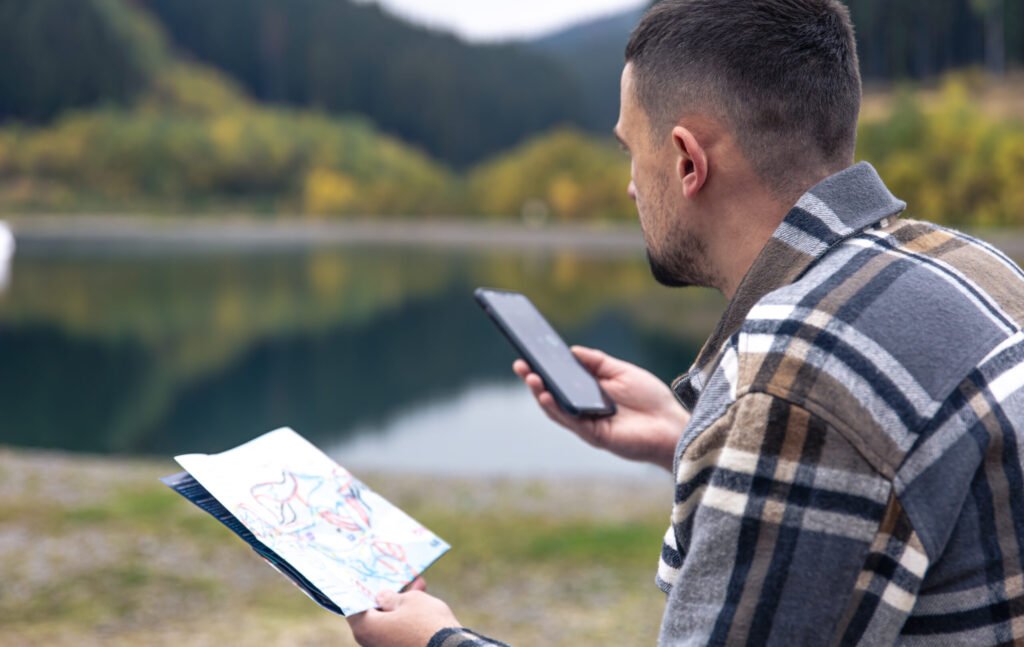
| Guiding Context | Key Features of Hybrid Navigation | Benefits |
|---|---|---|
| Wilderness Expeditions | Offline functionality, topographic maps | Enhanced safety, accurate navigation |
| Urban Tours | Historical data integration, real-time info | Engaging experiences, detailed information |
| Maritime Navigation | GPS, electronic chart display | Safe navigation, operational efficiency |
Top Hybrid Navigation Systems Dominating the 2025 Market
In 2025, professional guides are increasingly adopting hybrid navigation systems that combine the best of digital and traditional navigation methods. This shift is driven by the need for more accurate, reliable, and versatile navigation solutions.
Professional-Grade Software Solutions
The market is witnessing the emergence of sophisticated software solutions designed specifically for professional guides. These solutions offer advanced features such as real-time tracking, route planning, and terrain analysis.
Cloud-Connected Navigation Platforms
Cloud-connected platforms provide guides with the ability to access and update critical navigation data in real-time. This ensures that guides have the most current information, enhancing the safety and success of their expeditions. For instance, platforms that integrate with hiking safety trackers offer an additional layer of security.
Offline-Capable Hybrid Systems
Offline-capable systems are crucial for guides operating in areas with limited or no internet connectivity. These systems allow for seamless navigation even in the most remote locations, ensuring that guides can perform their duties without interruption.
Essential Hardware Companions for Professional Guides
To complement their software solutions, professional guides also rely on robust hardware companions. These include rugged GPS devices, high-resolution topographic maps, and durable compasses that can withstand the rigors of outdoor use.
The integration of hybrid navigation technology with traditional navigation tools like maps and compasses is becoming increasingly popular. This combination provides guides with a redundant system that can fall back on alternative methods if one component fails.
Furthermore, the development of specialized car GPS systems that can be adapted for use in various guiding contexts is expanding the toolkit available to professional guides. These systems offer turn-by-turn directions and real-time traffic updates, which can be invaluable in urban guiding scenarios.
Implementation Challenges and Strategic Solutions
As professional guides increasingly adopt hybrid navigation systems, they face unique implementation challenges that require strategic solutions. The integration of these advanced systems demands a comprehensive approach to overcome technical, financial, and operational hurdles.
Technical Training and Skill Development
One of the primary challenges is the need for technical training and skill development. Guides must become proficient in using hybrid navigation solutions effectively. This involves understanding the software, hardware, and integration methods. To address this, many organizations are investing in comprehensive training programs that cover the technical aspects of hybrid navigation systems.
Training programs should include hands-on experience with the equipment and software, as well as scenario-based training to simulate real-world conditions. This approach helps guides develop the necessary skills to utilize hybrid navigation systems efficiently.
Cost Analysis and Long-Term ROI for Guides
Another significant challenge is conducting a thorough cost analysis and understanding the long-term return on investment (ROI). The initial investment in navigation software and hardware can be substantial. However, the long-term benefits, including improved efficiency and enhanced client experiences, can lead to increased revenue and customer satisfaction.
| Cost Component | Initial Investment | Long-Term Savings |
|---|---|---|
| Hardware and Software | $1,000 | $500 (maintenance) |
| Training Programs | $500 | $200 (reduced errors) |
| Total | $1,500 | $700 |
By understanding the costs and benefits, guides can make informed decisions about implementing hybrid navigation systems. A detailed cost-benefit analysis can help guides appreciate the value of these systems and plan for their implementation effectively.
Case Studies: Transformative Success Stories
Hybrid navigation technology has been a game-changer for numerous guiding services worldwide. Various organizations have successfully implemented hybrid navigation systems, achieving significant benefits. This section highlights two remarkable case studies that demonstrate the transformative power of this technology.
Himalayan Expedition Company’s Navigation Revolution
The Himalayan Expedition Company, known for its challenging treks, adopted hybrid navigation systems to improve their expedition success rates. By integrating GPS navigation technology with traditional mapping, they enhanced route accuracy and safety.
The implementation resulted in a 40% reduction in navigation-related incidents and a 25% increase in client satisfaction. The company’s ability to provide real-time updates and adapt to changing weather conditions significantly improved the overall expedition experience.
How European City Guides Elevated Client Experiences
European City Guides, a leading provider of urban tours, integrated hybrid navigation technology to enhance their clients’ experiences. By combining digital navigation apps with detailed paper maps, they ensured seamless tour operations even in areas with poor internet connectivity.
This approach allowed them to offer more personalized and flexible tours, resulting in a 30% increase in customer satisfaction ratings. The guides could now navigate through historic city centers with greater ease, providing clients with a richer and more immersive experience.
The Future Trajectory of Hybrid Navigation Beyond 2025
As hybrid navigation systems continue to revolutionize professional guiding, the future beyond 2025 looks promising. Emerging technologies like AI and IoT are expected to further enhance hybrid navigation solutions, making them more sophisticated and integrated.
The integration of AI will likely enable more accurate predictive analytics, while IoT will facilitate real-time data exchange between devices, enhancing the overall navigation experience. This synergy will be particularly beneficial for hybrid vehicle navigation, where precise and adaptive routing is crucial.
Advancements in navigation software will also play a critical role, offering more intuitive interfaces and robust offline capabilities. As these technologies mature, professional guides can expect even greater reliability and flexibility from their navigation tools.
The future of hybrid navigation is not just about technological advancement; it’s about creating a more seamless and efficient guiding experience. By embracing these emerging trends, professional guides can stay ahead of the curve and continue to deliver exceptional services to their clients.


